Vasota Fort :
A Trekking Adventure 2023
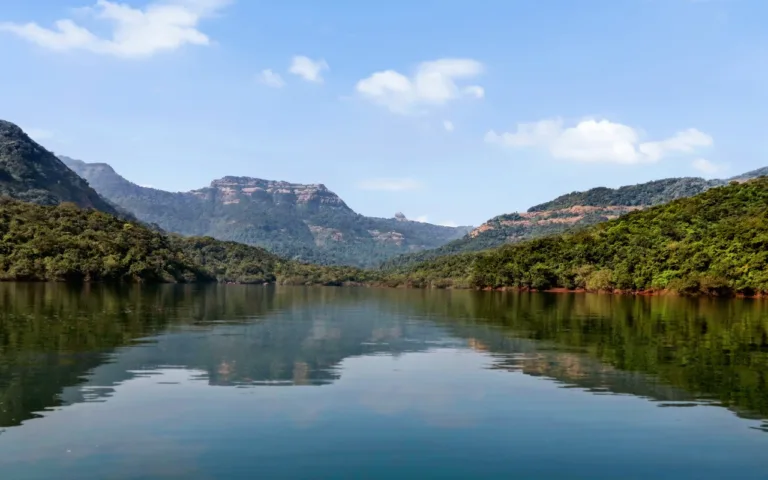
Vasota is a unique and magnificent fort located in Satara district nestled in the lush green forests of Maharashtra. The fort is located in the dense forest of Jaoli and serves as a defense to protect the treasures of nature. Fort Vasota is a popular destination for adventure hikers in search of thrilling experiences. Since its discovery in the enchanting forest of Satara, it has become the jewel of the region.
The main range of the Sahyadri mountains extends towards the south-west, and in the middle of this range is the magnificent enclosure of Tarikh fort at a low elevation. This range stretches from Mahabaleshwar to Date Gad and the Koyna River flows through this mountain.
Emerging from the dense forests of Jaoli, the Koyna River forms a reservoir at Helwak, known as Shivsagar. The mighty waters of the Shivasagar River touch the base of Vasota Fort and flow up to Tapola.. The main range of the Sahyadri Mountains and the waters of Shivsagar contribute significantly to the abundant forests in this region.
Historical Background of Vasota Fort
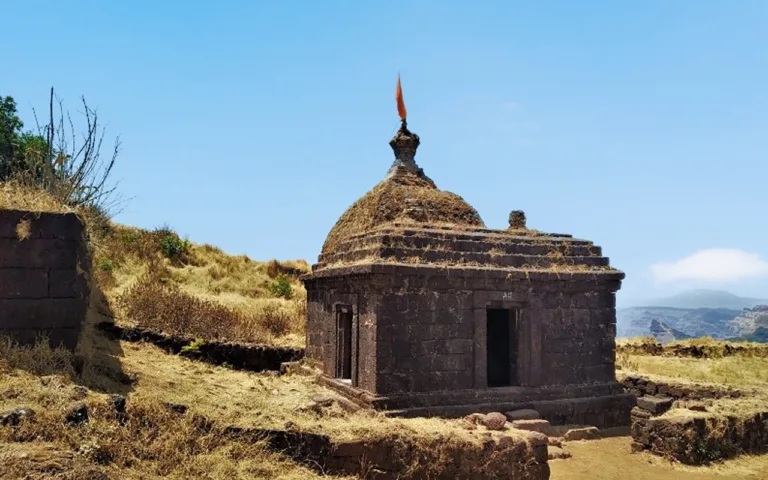
As we delve into the ancient history of Vasota Fort, we come across an interesting story that takes us back to the era of sage Vashishta. Legend has it that one of Vashishtha’s disciples, Agastya, came down from the Vindhya Mountains and crossed the Koyna river to the southern region. He sat on the peaks situated on the banks of Koyna Marg. In honor of their revered Guru, the local people named these hills after him. Over time, these hills were fortified and transformed into the Vasota fort, which bears the legacy of Vashishta’s name.
Vasota Fort has a lot of historical importance during the Peshwa period. While Shivaji Maharaj successfully conquered the surrounding forts after his victory at Jaoli, the Vasota fort remained relatively remote and out of his reach. Despite the assassination of Afzal Khan, Vasota Fort was never captured during Shivaji Maharaj’s campaigns. Later, when Shivaji Maharaj found himself embroiled in the challenges of Siddijohar, the Bandal warriors rose up and recaptured the Vasota fort on June 6, 1660 for Swarajya (self-rule).
Table of Contents
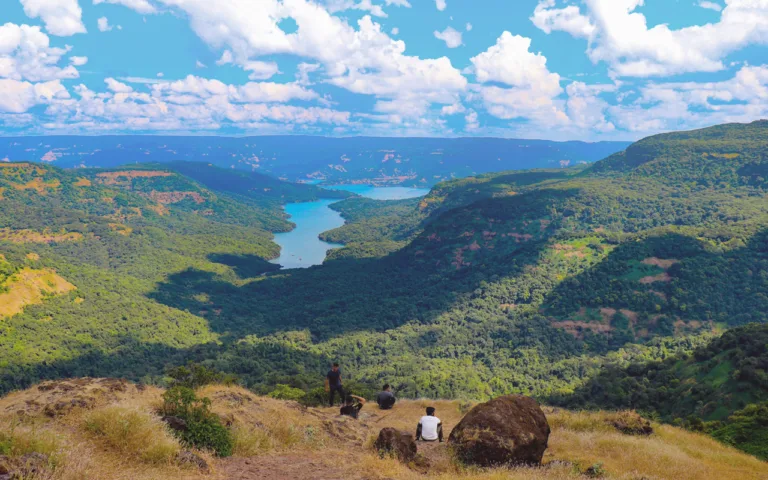
The fort’s strategic location amidst the dense jungle and along a river made it an important stronghold during the reign of Shivaji Maharaj. The fort’s seclusion and lush forests provide a natural habitat for diverse wildlife, including tigers and other endangered species that can still be seen here today. Due to the presence of tigers, Shivaji Maharaj gave Vasota the name “Vyaghragad” (Tiger Fort व्याघ्रगड).
Between 1669 and 1679, Rs. 26,000 were found at Vasota fort. In the following years, in 1706, the fort was taken over by Tai Telin, the wife of the Pant Pratinidhi. Further, during the tenure of Bapu Gokhale, the general of the Peshwas, fierce battles were fought with Tai Telin for about 8-10 months. Despite his valiant efforts, Tai Telin faced difficulties and in 1730, changing circumstances led to the Vasota fort finally falling into the hands of Bapu Gokhale.
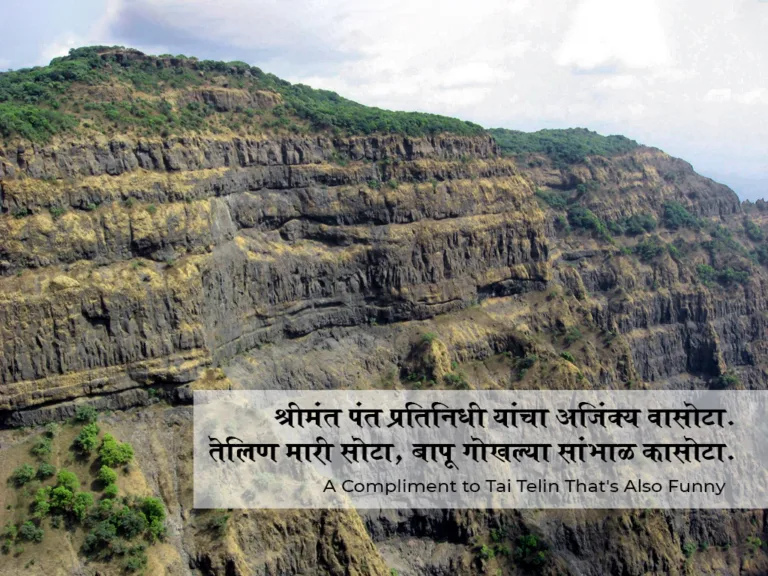
In 1818, the British bombarded the Vasota fort with heavy artillery, resulting in the destruction of several buildings such as the Chandika temple and the Daru-Kothar. They also looted property worth approximately Rs.5 Lakh (500,000).
Trekking to Vasota Fort

Trekking up to Vasota Fort is a thrilling experience for adventure enthusiasts. This trek offers various routes, each with its own difficulty level and beautiful views. The most popular route starts from Satara-Kaas-Bamnoli and involves an exciting boat ride in the backwaters followed by a challenging but rewarding trek through dense forests.
A village called Bamnoli is located on the Shivasagar reservoir’s eastern side. One can take a boat from here to Vasota. After a pleasant journey, launch services are available at Bamnoli and it takes 40 to 50 minutes to reach Vasota.

Depending on the water level, the time may vary. The base of the fort, which is located a fair distance to the east, once had a village by the name of Mate Indavali close by. Even now some ruins of that village can be seen. A “Dhopat Marg” (stone steps) trail leading to these ruins eventually leads to the base of the fort.

There is an idol of Maruti (Lord Hanuman) at the base and it is important to fill your water bottles from the stream while hiking.
The trail passes through dense forest on both sides, with a variety of trees and shrubs. There are many wild animals in this forest, with cows and bears being the most common. It is crucial to climb carefully and silently, as any animal, including wild cows and bears, can appear unexpectedly. Maintaining a safe distance is essential.

Halfway up the fort a path goes to the right, this path leads to the Nageshwar temple near Ketki’s throne, straight up the forest thins out into the Karvi forest, there are steps after going up through the Karvi forest. Getting to the Fort The fort can be accessed through a broken gateway.
On the left side of the ramparts near the entrance of the fort, the sight of Shivsagar Reservoir to the east and the vast forest enthralls us. On this side there is a water tank, this tank is divided into two sections by a wall, currently the potable water of the fort is here. When you go to the southern end from here, you can see the old Vasota mountain in front, the view of the old Vasota and Babukada valley keeps you entertained.
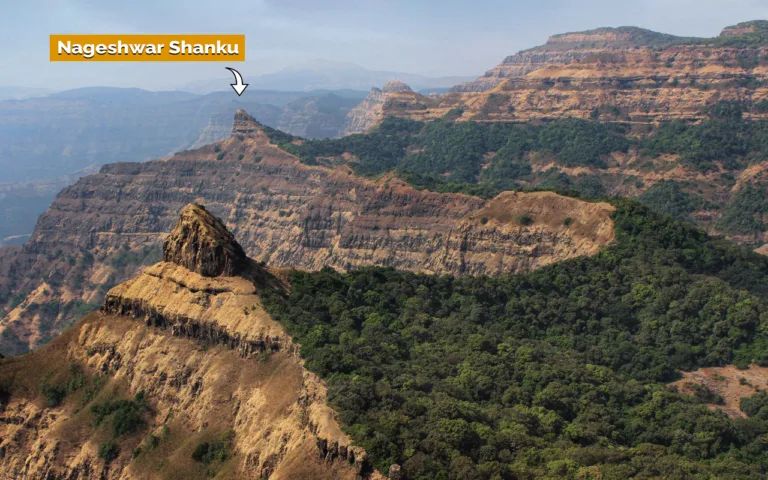
From there, we return to the water tanks and move towards the northern end. Next we see the ruins of the Maruti temple and a large palace, as well as the Mahadev temple. From this vantage point, one can enjoy the magnificent view of Nageshwar Shanku. Just before the Nageshwar Cone, there is another cone near Vasota known as Tulsi Vrindavan or Thenga
Wildlife and Biodiversity

The Vasota fort area is a haven for wildlife and biodiversity. Numerous plant and animal species including unusual species can be found there. Hikers can spot leopards, sloth bears, deer and many bird species here. Additionally, the location is a component of the Koyna Wildlife Sanctuary, which highlights its importance to the environment.
Tips for a pleasant visit to Vasota Fort:
Plan ahead and prepare yourself.

To ensure a memorable and hassle-free visit to Vasota Fort, it is advisable to plan ahead. The ideal time to explore the fort is during winter and the post-monsoon period when the weather is pleasant and well-suited for hiking.
For a safe and enriching experience, it is advisable to obtain the necessary permissions and permits from the forest department to enter the fort. Hiring a local guide with knowledge of the fort’s grounds and history can greatly enhance your visit and provide valuable insight.
As there are no food stalls or shops on the fort grounds, it is necessary to pack an adequate supply of water and food. It is also important that you equip yourself with proper trekking gear such as sturdy shoes, comfortable clothing, and necessary safety equipment.
By planning ahead, preparing well, and keeping in mind the natural and historical significance of Vasota Fort, you can make the most of your visit and create lasting memories.
Guidelines:
Respect the sanctity and protect the heritage.
When visiting the fort for trekking purposes, it is crucial to maintain the sanctity of the fort and I request you to fulfill this responsibility. It is important not to swim in water bodies like water tanks, small ponds in the Sahyadri area.
Avoid washing clothes or disposing of garbage in the water tanks on the fort grounds, as this will lead to water contamination. Please do not write your name or any other inappropriate content on the historic structures.
Also, be sure to maintain a peaceful environment while walking through the forest and avoid behaviors that may disturb wildlife. By following these guidelines we can preserve the rich historical significance of the fort.
Conclusion
Ultimately, Vasota Fort is an extraordinary historical destination that combines stunning architecture, breathtaking natural landscapes and exciting trekking opportunities. It acts as an entryway to the captivating history and diverse ecosystem of the region.
Whether you are an adventure lover, a history buff, or simply someone looking to connect with nature, Vasota Fort offers something special. Plan your trip to this hidden gem and immerse yourself in the magic of the Sahyadri Mountains.
FAQ's
Vasota Fort is an ancient historical fort located in the Sahyadri mountain range of Maharashtra, India.
To reach Vasota Fort from Mumbai, take the Mumbai-Pune-Satara-Bamnoli route. Take the Mumbai-Pune expressway to Pune and then take National Highway 48 (NH48) to Satara. From Satara, follow the signs to Bamnoli village, which serves as the starting point for the trek to Vasota Fort.
The ideal seasons to visit Vasota Fort are winter and summer. However, trekking is restricted during the rainy season as there are many leeches in the area.
Permission for the trek can be obtained in Bamnoli on the day of your visit. Just fill out a form with your details and those of your friends to get the permit.
It is recommended to hire a local trekking guide to have a safe and enlightening experience, especially if you are not familiar with the region.
The trek to Vasota Fort usually takes around 2-3 hours, depending on your pace and fitness level.
Yes, you may need to obtain permits or permissions for the trek, especially if it involves any restricted areas or wildlife sanctuaries.
Camping is not allowed on Vasota Fort due to its historical importance and conservation efforts. Near the village of Bamnoli there are campsites where you can spend the night before or after the trek.
Yes, during heavy monsoons, the access to Vasota Fort may be closed due to security concerns. It is advised to check with the local authorities before planning a monsoon trek.
How to reach Vasota Fort
If you are planning a trip from Mumbai via Pune-Satara and Bamnoli village, you can expect a pleasant journey through picturesque landscapes and rustic charm. This route is the gateway to the beauty of rural India. In this guide, we will show you the best way to get from Mumbai, Pune to Satara and then continue your adventure to the charming village of Bamanoli.
